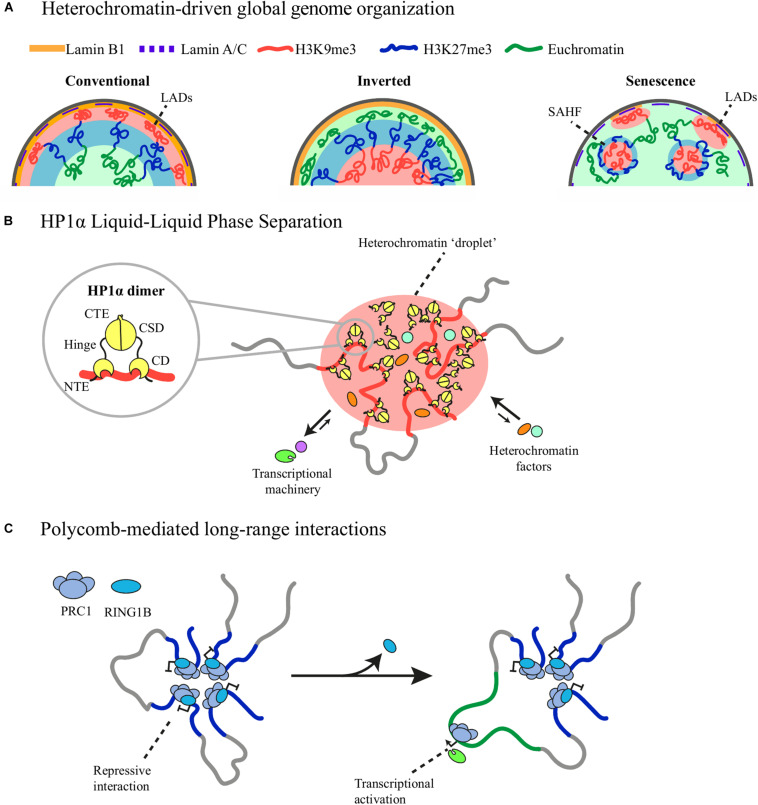FIGURE 1.
Distinct types of heterochromatin-driven genome organization. (A) Constitutive heterochromatin (red) tethering to the nuclear lamina forms LADs and instructs the conventional organization of the genome with euchromatin (green) located at the center of the nucleus adjacent to facultative heterochromatin (blue). Loss of heterochromatin tethering causes heterochromatin repositioning and inversion of the conventional organization in rod cells and the formation of SAHF in oncogene-induced senescence. (B) The chromodomain (CD) of HP1α recognizes and binds H3K9me3 histone mark. HP1α-bound heterochromatin comes together after local accumulation of HP1α promotes phase-separation mediated by its unstructured regions in the N-terminal (NTE), hinge and C-terminal (CTE) domains. Phase separation favors the exclusion of the transcriptional machinery from the heterochromatic phase and the inclusion of other heterochromatic factors. (C) RING1B, a member of PRC1, structures long-range interactions between promoters of Polycomb-repressed genes. Loss of RING1B causes loop disruption and concomitant gene activation.

